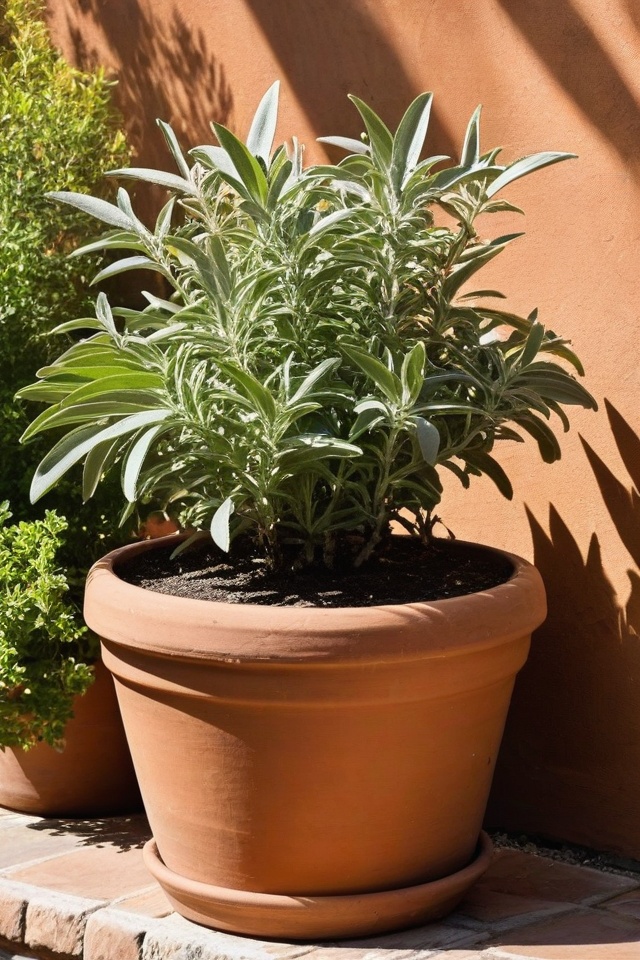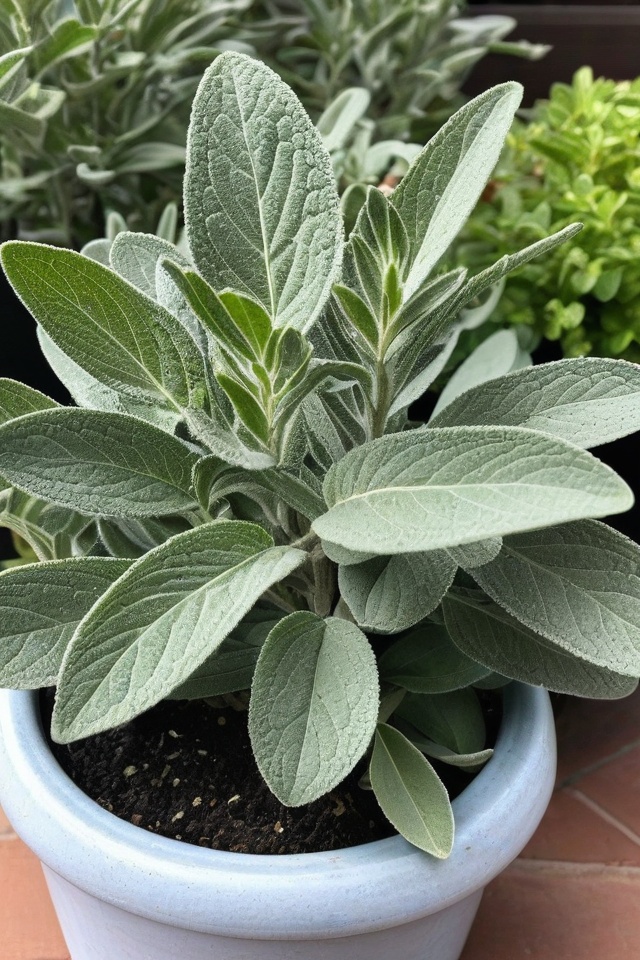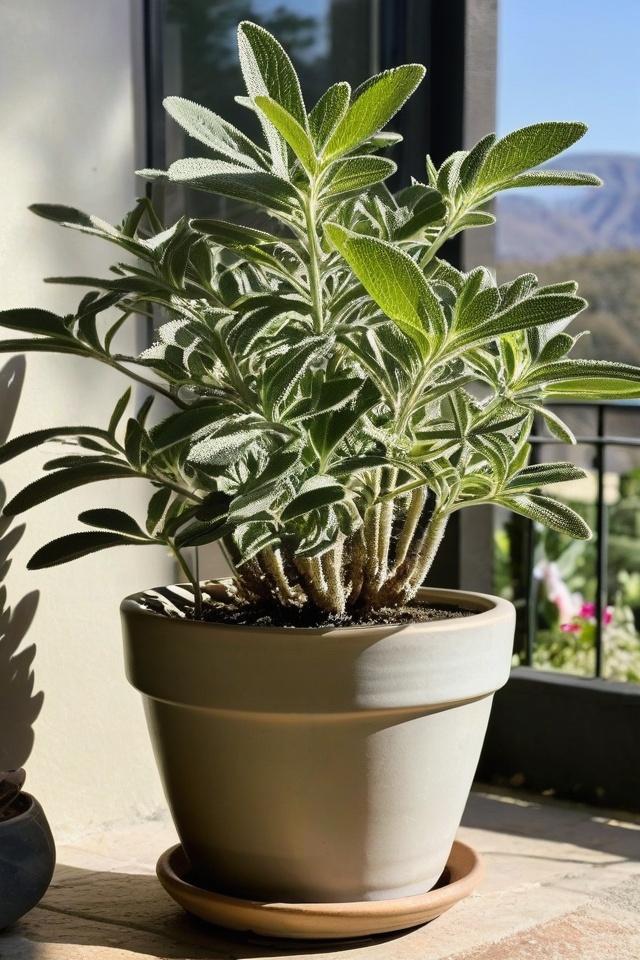Want to grow sage in a pot?
It’s easier than you think!
With the right tips, you can have fresh sage at your fingertips. Explore 8 simple tactics to help your sage thrive.
Let’s get started!
Pick the Right Pot

Choosing the right pot is super important when growing sage. Opt for a pot that’s at least 12 inches in diameter.
Bigger pots provide plenty of space for sage roots to spread out, and they help retain moisture. Make sure the pot has good drainage holes, too.
Sage doesn’t like wet feet!
Use Quality Soil
Fill your pot with well-draining soil. A mix designed for herbs or vegetables works great.
You can even make your own mix by combining regular potting soil with some sand or perlite. This setup helps keep your sage’s roots happy and healthy.
Give It Plenty of Sun

Sage is a sun lover! Place your pot in a spot where it gets at least 6-8 hours of direct sunlight each day.
If you’re growing indoors, a sunny windowsill or a grow light will do the trick. More sun equals more flavor!
Water Wisely
When it comes to watering, sage likes to stay on the dry side. Water your pot whenever the top inch of soil feels dry to the touch.
Be careful not to overwater. Soggy soil can lead to root rot and a sad sage plant.
Prune Regularly

Pruning is key to keeping your sage plant thriving. Snip off any dead or yellowing leaves to promote new growth.
Regularly trimming the plant also helps it stay bushy and stops it from becoming leggy. Plus, more pruning means more fresh sage for cooking!
Feed Your Sage
While sage isn’t a heavy feeder, it does appreciate a little nutrient boost. Use a balanced liquid fertilizer once a month during the growing season.
Dilute it to half-strength to avoid over-fertilizing. Your sage will love the extra TLC!
Protect from Pests

Even in a pot, sage can sometimes attract pests like aphids or spider mites. Keep an eye out for any troublesome bugs.
If you spot any, wash them off with a gentle stream of water or use an insecticidal soap. Healthy sage plants are more resistant to pests.
Harvest Smart
When it’s time to harvest, cut sprigs from the top of the plant. This encourages more growth and keeps the plant looking good.
Don’t harvest more than a third of the plant at once, though. You want to leave enough so it can keep growing strong.

